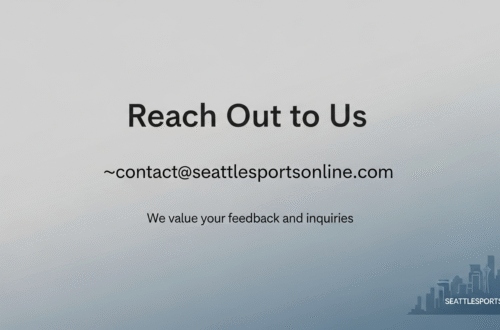Have you ever seen the phrase “pop over to this website” in an article, email, or blog? It might seem simple, but this small phrase carries a big message. When someone says “pop over to this website,” they are inviting you to visit a new place online—usually a place filled with helpful, fun, or important information.
In this article, we will explain what this phrase really means, why people use it, and why you should feel confident following those links. You’ll also learn how to stay safe online while exploring new websites.
What Does “Pop Over to This Website” Mean?
“Pop over to this website” is a friendly way to say “click this link and go check out another website.” It sounds casual and welcoming, as if someone is inviting you for a quick visit. People often use it in blogs, emails, social media posts, and even YouTube descriptions.
Here are some examples:
- “If you want to see more photos, pop over to this website.”
- “Need the full recipe? Pop over to this website for all the steps.”
The phrase makes the action sound quick and easy—just a short online trip!
Why Do People Say “Pop Over to This Website”?
Writers, bloggers, and marketers love this phrase because it sounds friendly and not too pushy. It feels more like a suggestion than a command. Instead of saying “click here now,” which may feel too strong, “pop over” feels like a soft invitation.
Here’s why this phrase is popular:
- Casual tone: It’s not demanding.
- Reader-friendly: It sounds like a recommendation from a friend.
- Curiosity spark: It makes you wonder what’s waiting on the other website.
Using kind language encourages people to take action without feeling forced.
Where Do You See This Phrase the Most?
You can see “pop over to this website” almost everywhere online. Let’s look at a few common places:
- Blog posts: When the writer wants to share more detailed info.
- Newsletters and emails: To link you to products, services, or extra content.
- Social media posts: Especially on Instagram or Facebook, where the post is short and links are in the bio or comments.
- YouTube video descriptions: To guide viewers to resources, tools, or full tutorials.
When you see it, it’s often followed by a hyperlink (a clickable word or image).
What to Expect When You Pop Over
When someone tells you to “pop over to this website,” they usually want you to:
- Learn something new (like reading an article or watching a video)
- Buy a product or try a service
- Sign up for a newsletter, freebie, or special offer
- Discover a tool or resource that’s useful for you
It’s like someone showing you a helpful shortcut. The goal is to offer you something valuable that the current page doesn’t fully explain.
Stay Safe When Clicking Any Link
Even though “pop over to this website” sounds nice, you still need to be careful. Not all links are safe. Before you click, keep these tips in mind:
- Check the website address: Look for websites that start with https:// (the “s” means secure).
- Hover before clicking: On a computer, put your mouse over the link to see where it leads before you click.
- Use common sense: If it looks too good to be true, it probably is.
- Use antivirus software: Keep your computer or phone protected.
- Avoid pop-ups and sketchy ads: Be cautious of websites that are filled with strange pop-up messages.
Following a link should feel safe, not scary. If you trust the source (like a favorite blog or YouTuber), chances are the link is safe too.
Benefits of Visiting New Websites
When someone invites you to “pop over to this website,” you get a chance to:
- Discover new ideas you didn’t know about
- Find useful tools or apps
- Buy something cool or helpful
- Learn new skills
- Connect with communities or forums
It’s a way of growing your knowledge, finding better solutions, and sometimes even saving time and money.
Examples of Helpful “Pop Over” Links
Let’s say you’re reading a blog post about cooking pasta. It might say:
“If you’re not sure how to make homemade sauce, pop over to this website where we explain 3 easy recipes.”
Or maybe you’re reading about online learning:
“Need free study resources? Pop over to this website and download free flashcards.”
These links don’t just redirect you—they often open the door to something better.
How to Use This Phrase in Your Own Writing
If you write blogs, newsletters, or even school projects, you can use “pop over to this website” to guide your readers. Here’s how:
- Use it after introducing a related topic.
- Keep the link relevant to your topic.
- Make sure the page you’re linking to is helpful and works.
For example:
“Want more fun science experiments for kids? Pop over to this website and find 20 easy ideas with things you already have at home.”
This keeps your readers engaged and gives them more value.
When Not to Use “Pop Over to This Website”
Sometimes, this phrase may not be the best choice. Don’t use it if:
- The link leads to a serious or formal topic (like legal forms or hospital info)
- The tone of your article is professional or academic
- You’re writing for a very formal business audience
In these cases, it’s better to say:
- “Visit this website”
- “Click here for more details”
- “See the full report on this site”
Match your tone to the audience.
Final Thoughts
Yes—pop over to this website is more than just a phrase. It’s an invitation to discover something new, helpful, or exciting online. When used the right way, it builds trust between the writer and the reader. It helps people find value beyond the current page.
So the next time someone says “pop over to this website,” don’t scroll past it too fast. You might just find a new favorite recipe, a tool that saves you hours, or a deal you didn’t know existed.
FAQs
Is it safe to pop over to a website I don’t know?
A: It depends. Always check the link, look for “https://”, and make sure the source is trusted before clicking.
What is the difference between “pop over” and “visit”?
A: “Pop over” sounds friendly and quick, while “visit” is more neutral. Both mean the same action—going to another website.
Can I use this phrase in school projects or formal emails?
A: It’s better for casual writing like blogs or emails to friends. For formal writing, use “please visit this website.”
Do I need special tools to follow a link?
A: No, just a working internet connection and a device with a browser (like Chrome or Safari).
Can I trust links from social media posts?
A: Be careful. If the post comes from someone you trust and the link looks real, it’s usually okay. Avoid links from unknown or suspicious pages.


